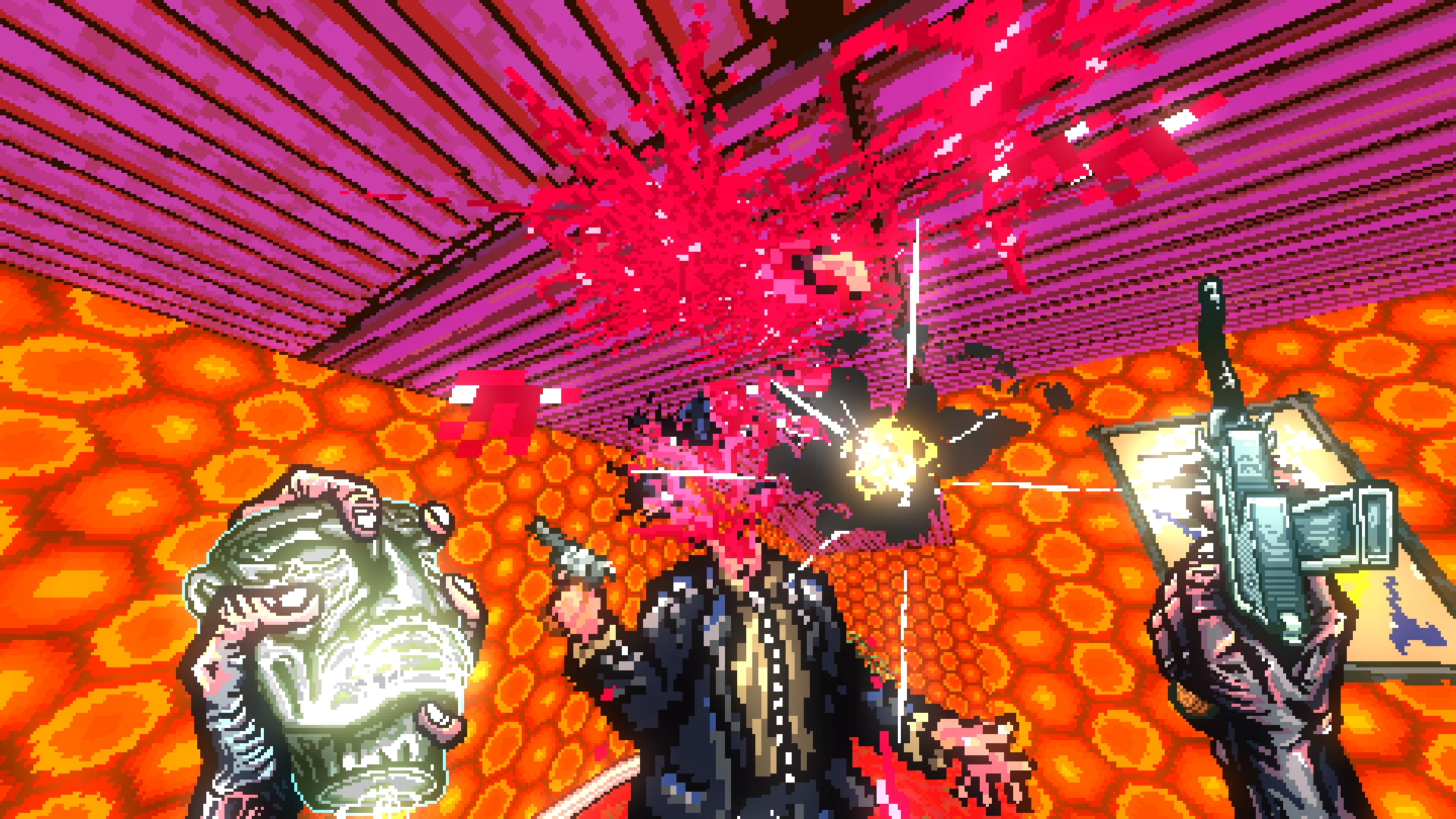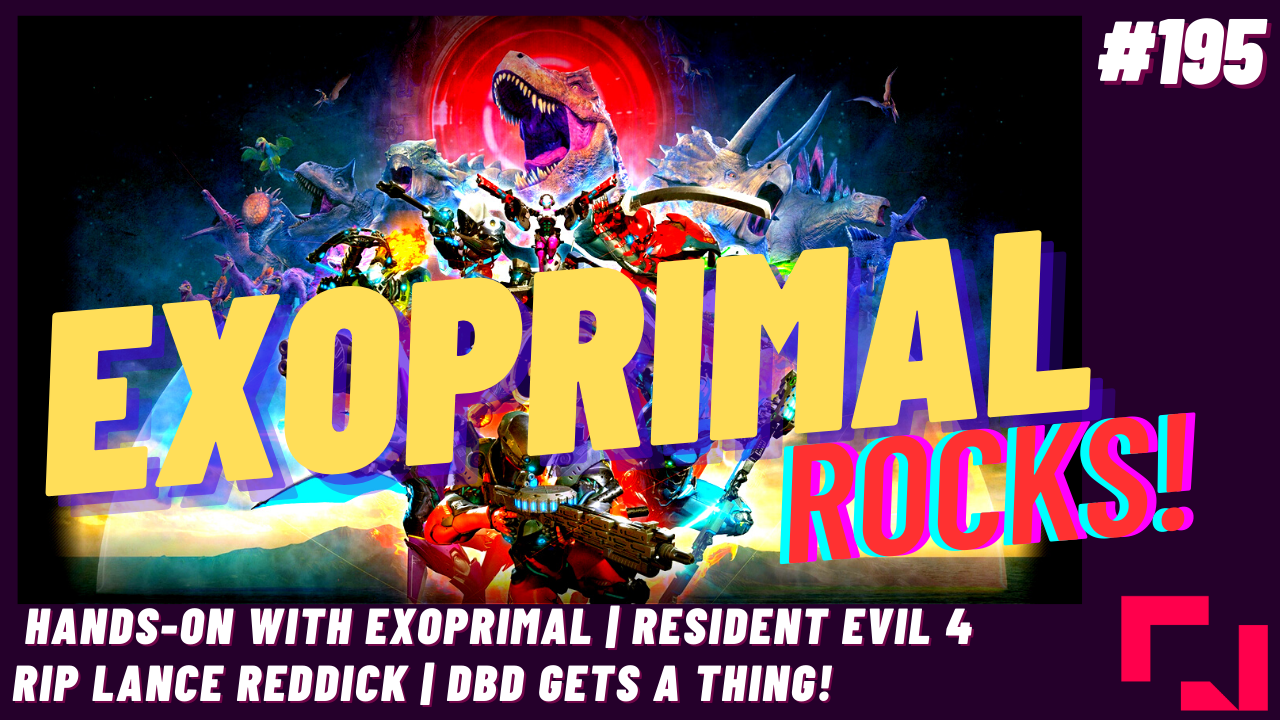Post Void (PC) Review – This Is Your Doom On Acid
If any game ever really needed to have an epilepsy warning for players, it’s Post Void. A game designed with the tenets of the old guard of First Person Shooters in mind, this game has more flashing lights and clashing colour palettes than a Ministry of Sound weekend rave. Like Duke Nukem 3D dropped a bag of mushrooms, Post Void has an abrasive edge to everything it does that’ll either drag you along for the ride or repel you almost immediately.
Post Void’s tutorial sets this tone. In a forest with walls and floors that throb, contract and move, it’s immediately a trippy experience. Inspired by the old school shooters from the 90’s like Doom and Duke Nukem 3D, this game runs at a blistering pace. This doesn’t abate throughout the game from concept right through to art style and structure.
A procedurally generated rogue-like perma-death shooter, Post Void is a game that demands you attack and attack quickly and precisely – or die. You see, in your left hand is an Idol that represents your head. From that head drips a white ooze that reduces as every second passes by and with every blast of damage you take. As the Idol gets close to completely emptying, a countdown from 3 will appear on screen and when it’s entirely empty, it’s game over. This is where your right hand comes in…
To keep the Idol filled you’ll need to race between all the bizzaro monsters, aliens and enemies that Post Void throws at you, avoid their attacks and blast them with your gun/knife. Each thing you kill in this psychedelic world gives you a top up of the white ooze in the Idol and helps towards avoiding that game over. Much like Doom Eternal, this game demands aggressive play but unlike its AAA counterpart, the game design in Post Void is much more loud and demanding.
That’s not something that’s exclusive to the game design. The art style is as vivid and as garish as a Nickelodeon cartoon series developed by Tim Burton. The walls, patterned and bright funnel you alone corridors carpeted in more clashing patterns that no interior decorator would ever put together. Each blast with a gun lights up the screen and even invites a split second of negative exposure at its brightest. The Post Void enemies you’ll be shooting are a gallery of Cronenbergs like meat walls with a giant mouth/eye (I can’t decide which it is) and turned in feet or snake headed gangsters mixed with more sci-fi inspired beasts like flying explosive drones. All of this is underpinned by a soundtrack that sounds like it’d accompany a Surfing or Skating clips video complete with quick riffs and a motivating dumb beat. I get the feeling developers Y/CJ/Y wanted the player to be thinking “What the f**k” with each new act they reach. They’ve certainly managed that.
There’s 11 levels in Post Void and the Idol’s white ooze is refreshed at the start of each one. The aim of each is to reach the pool of white at the end which transports you to the next area. Each level has a theme it’ll keep on each run at the game but the structure of the level will differ because of the procedural generation. The first level has had a maze of corners and 2 big rooms and then been an almost straight line before start to finish on different runs. The further you get into the game, the more complex the level designs become. By the time you reach Act 2, you’ll have to jump over to new elevations and look for different directions in which the exit might be.
Some runs will last 17 second. Others will last 5 minutes. Because Post Void is a rogue-like, you’ll likely see the first 2 levels a lot more than the rest of them. These are often the most difficult levels in the game because at the end of each level, you get to choose a buff, weapon or new ability which will remain throughout the rest of that run. These buffs include slower moving enemy bullets, more fluid in the Idol, enemies that explode upon death, faster reloads and loads more. It’s the weaponry that make the difference though – an uzi, shotgun or knife – that will really have you cutting through levels like butter. The Shotgun completely changes the game and while it removes some of the tension, it makes the game much easier.
You’ll see the game over screen – a blast of light and image that might dislodge some repressed memories in some of you because of how much of an assault on the senses it is – often in Post Void. This is a title that will certainly test your patience and it’ll really come down to how much you take to the retro inspired game play and noisy visuals as to whether it’s worth persisting with. The fact that there’s a little luck involved in pulling together a really good run – through level generation and the random buffs you’re served after each level – might put off some players too.
Post Void will assault your retina’s with flashing lights and colour clashes that’re both hypnotic and headache-inducing. The old school, fast paced shooter action tied to a system which demands you kill, kill, kill are almost impossible not to enjoy but this is a punishing game that’ll need the player to have patience with the repetition it’ll put them through. For a tiny price, there’s a few hours of fun to be had with Post Void, especially for those coming off the likes of Dusk or Ion Fury.


This is why i dont trust critics reviews, you compliment the game and talk about how its great and then give it a 6/10 because its difficult. honestly fuck off, its people like you that make indie games fail
I guess you didn’t read the negatives I pointed out then? I didn’t find Post Void difficult. I found it repetitive and with noisy, headache inducing visuals.
As for indie games, please feel free to read through the 500+ reviews I’ve written. Most of them are for indie games. It’s my passion. But I’m not going to give a game a pass just because it’s an indie game. I’ll write about what I think honestly about a game no matter the size or scope.